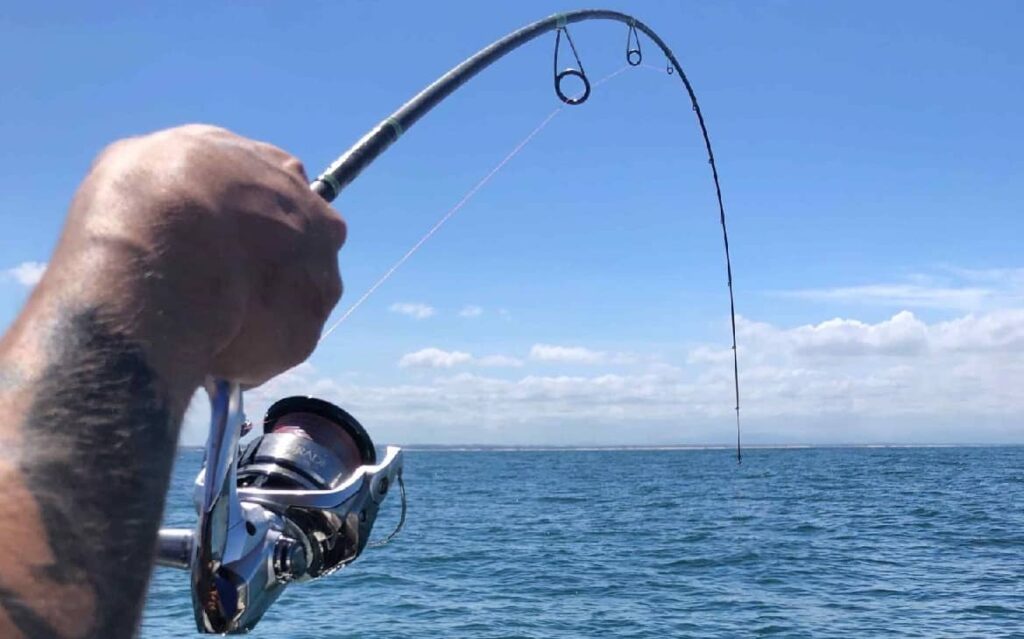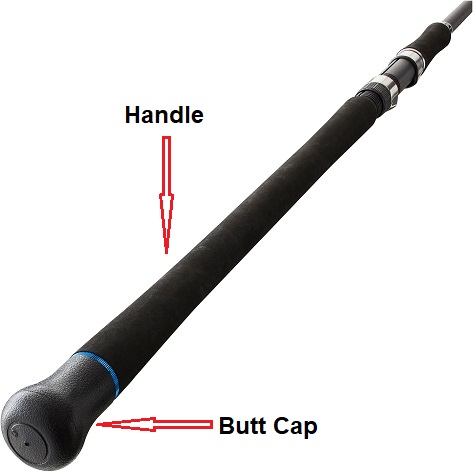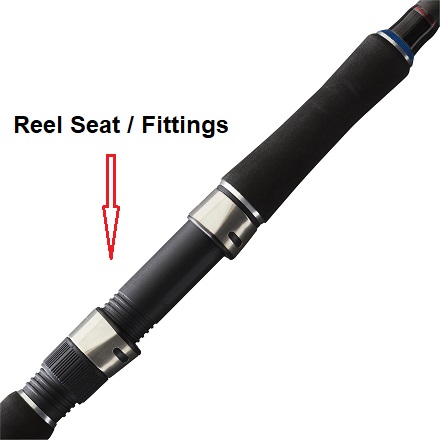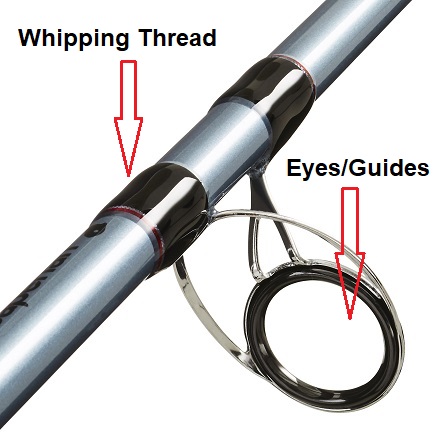
Getting to Know the Different Parts of a Rod
Fishing rods are essential tools for any angler, and understanding the different parts of a rod is crucial for choosing the right rod for your needs and using it effectively. Rods are made up of several different components, each of which plays an important role in the rod’s performance and functionality.
From the handle and reel seat to the guides and line clips, each part of a rod serves a specific purpose and can impact the angler’s overall fishing enjoyment. In this guide, we’ll take a closer look at the various parts of a rod, what they do, and how they can affect your angling success. Whether you’re a seasoned angler or just starting out, understanding the parts of a fishing rod is essential for making informed decisions about your gear and improving your skills on the water.
Blanks
The rod blank is the central shaft or body of a fishing rod and is the foundation upon which the other components of the rod are built. It is typically made of a high-strength, lightweight material, such as graphite, fiberglass, or a composite of the two.
The material used to make the rod blank has a significant impact on the rod’s strength, sensitivity, and overall performance. For example, graphite blanks are known for their sensitivity, responsiveness, and light weight, while fiberglass blanks are known for their durability and ability to handle heavy loads.
The construction of the rod blank also plays a role in the rod’s performance. The most common types of blank construction are:
- Solid blank: This type of blank is made from a single, solid piece of material and is typically used in high-end rods. Solid blanks are known for their sensitivity and strength.
- Multi-piece blank: This type of blank is made from multiple pieces that are connected with ferrules or spigots. Multi-piece blanks are convenient for travel, but may not be as sensitive as solid blanks.
- Composite blank: This type of blank is made from a combination of graphite and fiberglass or other materials, and is designed to provide a balance of strength, sensitivity, and flexibility.
Rod blanks come in a variety of lengths, weights, and power ratings, which determine how much weight the rod can handle and how much bend or flex it will have when under load. It’s important to choose a rod blank that is appropriate for the type of angling you plan to do, as well as your own skill level and personal preferences.
Handles
The handle of a fishing rod is the part of the rod that the angler holds onto while angling. The handle is important because it helps the angler to grip the rod comfortably and securely, which is essential for accurate casting and effective fish fighting. There are several different types of rod handles, each with its own advantages and disadvantages.
- Cork Handles: Cork is a popular material for rod handles because it is lightweight, durable, and provides a good grip even when wet. Cork handles also have a classic look that many anglers find appealing.
- EVA Foam Handles: EVA foam is another popular material for rod handles. It is also lightweight and durable, but has a softer feel than cork and may provide a more comfortable grip.
- Split Grip Handles: Split grip handles have a shorter rear grip and a longer front grip, with a gap in between. This design reduces the overall weight of the rod and provides greater sensitivity.
- Full Grip Handles: Full grip handles are longer than split grip handles and provide a more comfortable grip for anglers who prefer to hold the rod at the butt end. They also provide a more balanced feel to the rod.
- Pistol Grip Handles: Pistol grip handles are a variation of the full grip handle. They have a shorter rear grip that is designed to fit snugly in the palm of the hand, providing greater control and sensitivity.
In general, the type of handle that is best for you will depend on your personal preferences and the type of fishing you plan to do. Some anglers prefer cork handles for their traditional look and feel, while others prefer EVA foam handles for their softer grip. Split grip handles are often favoured by bass anglers who need to feel every vibration in the water, while full grip handles are preferred by those who need a longer handle for greater leverage. Ultimately, the choice of handle comes down to what feels most comfortable and effective for you.

Butt Caps
The rod butt cap is a component of the handle or grip of a rod that is located at the end of the rod opposite the tip. It is designed to provide a comfortable and secure grip for the angler’s hand, and it can be made from a variety of materials, including rubber, cork, or EVA foam.
The size and shape of the butt cap can vary depending on the type of rod and the preferences of the angler. Some butt caps are rounded or tapered, while others are more cylindrical or have a flared shape. Some butt caps may also feature a texture or grip pattern to provide additional traction for the angler’s hand.
In addition to providing a comfortable grip, the butt cap can also serve other functions. For example, some butt caps may be removable to allow access to the inside of the rod, which can be useful for cleaning or repairing the rod. Some butt caps may also be threaded to allow the attachment of additional accessories, such as rod holders or fighting belts.
The butt cap is an important component of a fishing rod that can contribute to the angler’s comfort and control while angling.
Reel Seats/Fittings

The reel seat is a component of a rod that is located above the handle and is used to attach the reel to the rod. It is designed to securely hold the reel in place while also providing a comfortable grip for the angler.
Reel seats come in different shapes, sizes, and materials. The most common materials used for reel seats are metal, plastic, or graphite. Metal reel seats are durable and can handle heavy loads, but they can be heavier than other materials. Plastic reel seats are lightweight and corrosion-resistant, but they may not be as strong as metal. Graphite reel seats are lightweight, strong, and corrosion-resistant, making them a popular choice among anglers.
There are two main types of reel seats: fixed and sliding. Fixed reel seats are permanently attached to the fishing rod and cannot be adjusted. They are often used on one-piece rods, where the reel position is fixed. Sliding reel seats, on the other hand, can be moved up or down the rod to adjust the position of the reel. This allows anglers to customise the position of the reel to suit their personal preferences or the type of fishing they are doing.
When choosing a fishing rod, it is important to select a reel seat that is compatible with your reel. The reel seat should be able to accommodate the size and shape of your reel, and it should be able to hold the reel securely in place without any wobbling or slipping. A well-designed reel seat can help you to cast with greater accuracy and control, and can make your fishing experience more enjoyable overall.
Eyes/Guides
Rod guides, also known as rod eyes, are the small rings or loops that are attached to the rod and guide the fishing line from the reel to the tip of the rod. They are usually made of metal or ceramic and are spaced at intervals along the length of the rod.
The primary function of rod guides is to keep the line from rubbing against the rod and causing friction that can reduce casting distance and accuracy, as well as damage the line. The guides are typically designed to be lightweight, smooth, and durable, and they come in different shapes and sizes depending on the type of rod and the intended use.
The guides closest to the reel are usually larger than those toward the tip of the rod to accommodate the larger diameter of the line spool. As the line moves toward the tip of the rod, it passes through progressively smaller guides, with the smallest guide located at the very tip of the rod. The number and placement of the guides can vary depending on the length and type of the rod, with longer rods generally requiring more guides to ensure proper line control and casting performance.
Rod guides play an important role in ensuring that the line moves smoothly and efficiently through the rod, allowing for optimal casting performance and reducing wear and tear on the line.

Whipping Thread
The rod whipping thread is a special type of thread that is used to wrap around the guides and blank of a fishing rod to secure the guides in place and add durability to the rod.
The whipping thread is typically made of a strong and durable material such as nylon or polyester and is coated with a resin to make it waterproof and resistant to abrasion. The thread comes in a range of colours, allowing anglers to choose a colour that matches the design of their rod or personal preferences.
To apply the whipping thread, an angler will typically use a technique called “whipping,” where they wrap the thread around the guide or blank in a specific pattern, securing the thread with a series of half-hitches or knots as they go. The whipping thread not only helps to secure the guides to the rod, but it also adds a decorative touch to the rod and helps to protect the blank from damage.
Some anglers may choose to add multiple layers of whipping thread to their rods for added durability and strength, particularly if they are targeting large or hard-fighting fish species. Overall, the whipping thread is an important component of a rod and plays a key role in both the functionality and aesthetics of the rod.
Line Clips
Rod line clips, also known as line guides or hook keepers, are small devices located on the blank or handle of a rod that are designed to hold the line in place when the rod is not in use.
Line clips typically consist of a small metal or plastic loop that is attached to the rod with a small screw or adhesive. When the angler is not actively fishing, they can use the line clip to hold the line in place, preventing it from getting tangled or caught on other objects.
Line clips can also be used to hold hooks or lures in place on the rod. Some line clips are designed with a small groove or notch that allows the angler to slide the hook or lure into place, keeping it securely on the rod until it is needed.
Line clips are a useful feature on rods, as they help to keep the line and hooks organised and prevent tangles or damage to the fishing gear. They are particularly useful when the angler needs to move around or transport their rod, as they can help to prevent the line from getting tangled or caught on other objects during transit.
Flexible Coating Varnish
The flexible coating varnish on a fishing rod is a protective layer of coating that is applied to the rod’s blank and guides to help protect them from wear and tear, as well as exposure to the elements. The coating is typically made of a type of epoxy resin, which is known for its durability and resistance to moisture and UV light.
The flexible aspect of the coating refers to its ability to withstand some bending and flexing without cracking or peeling. This is important because rods are designed to bend and flex while under load, and a coating that is too rigid can become damaged or peel away from the rod over time.
The varnish is typically applied to the rod in several thin layers, with each layer allowed to dry and cure before the next layer is added. This helps to ensure that the coating is evenly distributed and fully covers the rod.
In addition to providing protection, the coating can also enhance the appearance of the rod, giving it a glossy or matte finish depending on the type of coating used. Some coatings may also add colour or texture to the rod, allowing anglers to customise the look of their gear.
The flexible coating varnish is an important component of a rod that helps to protect and preserve it over time, ensuring that it remains in good condition and performs well on the water.
Summary
A fishing rod consists of several important components that work together to create a functional and effective angling tool. The handle, reel seat, butt cap, guides, blank, ferrule, and tip-top all play important roles in the design and performance of the rod.
Additionally, line clips or hook keepers can be a helpful feature that keeps the line and hooks organised and prevents tangles or damage to the fishing gear. By understanding the different parts of a rod and how they work together, anglers can choose a rod that is well-suited to their needs and preferences and maximise their chances of successful fishing.
The Best Telescopic Fishing Rods – Top 10 Reviewed
